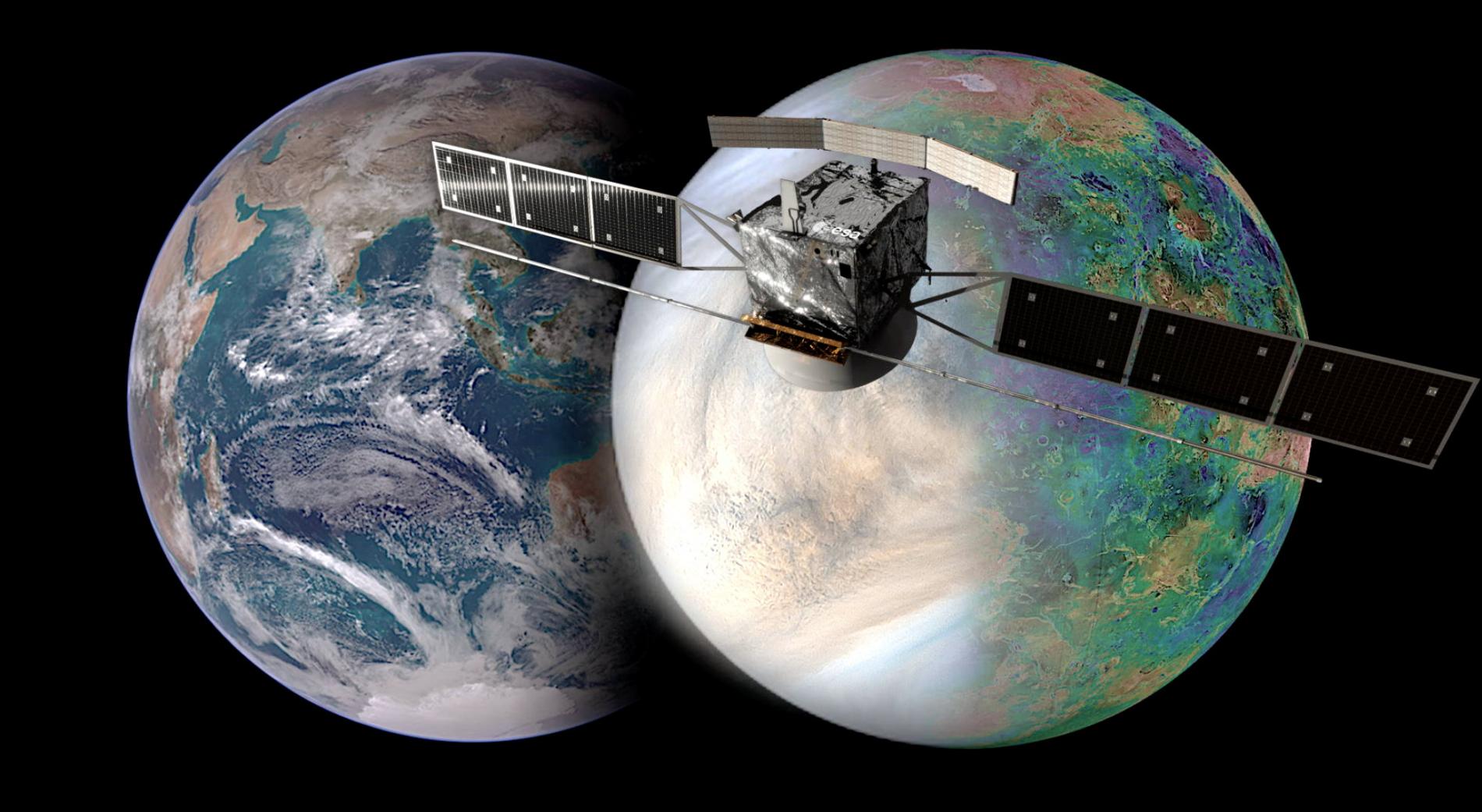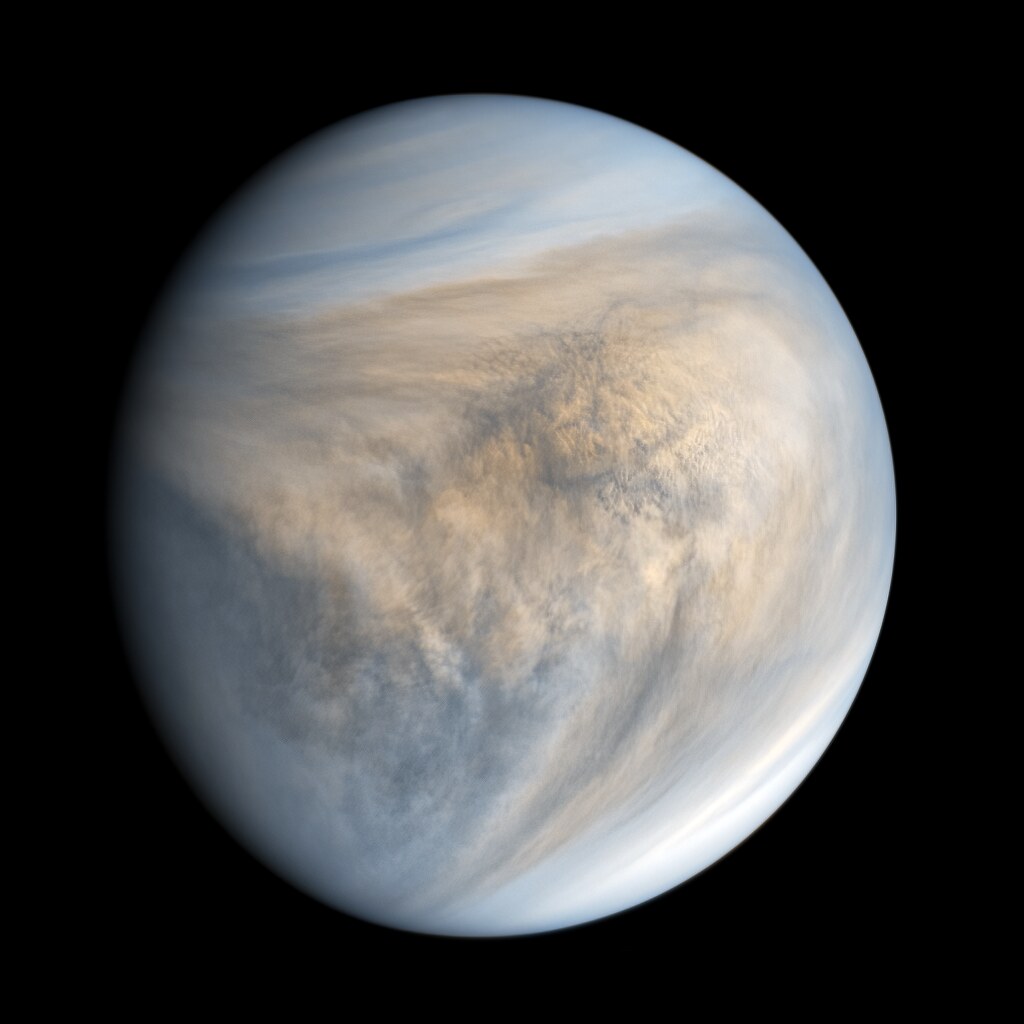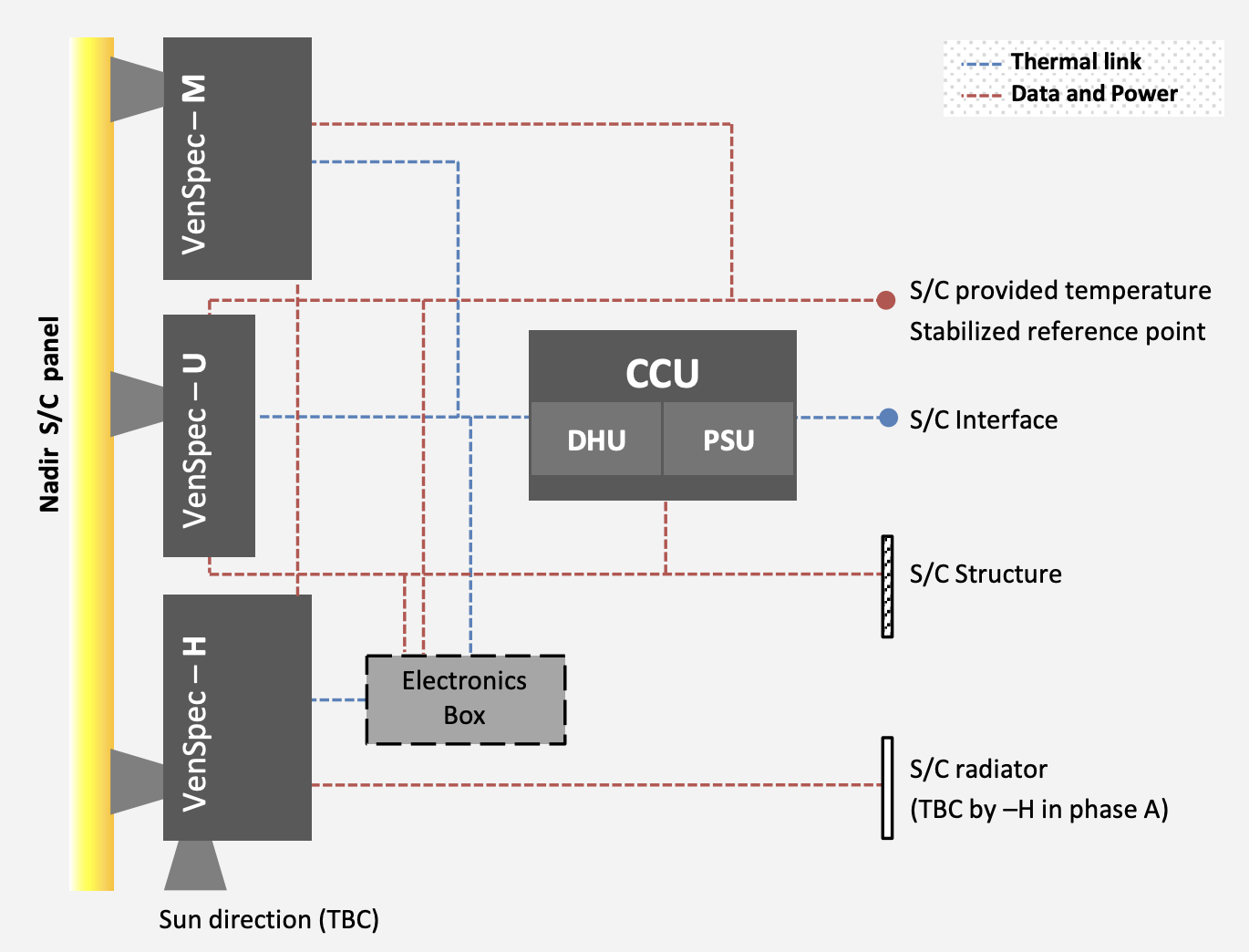The European Space Agency approves construction of EnVision, the next major mission to Venus
The Instituto de Astrofísica de Andalucía (IAA-CSIC) participates in both its technological development and its scientific return.
The mission will study Venus's core and atmosphere to understand its volcanic activity and climate and find out how this twin of Earth became so inhospitable.
The European Space Agency (ESA) has approved the construction and implementation of EnVision, a space mission that aims to answer many of the open questions about the planet Venus. The Instituto de Astrofísica de Andalucía (IAA-CSIC) is significantly involved in one of the four main instruments of the mission. During the course of this year, the project will select a European industrial contractor to begin work on the construction of the instruments and the spacecraft.
The mission will study Venus from its inner core to its upper atmosphere and provide fundamental data on its volcanic activity and climate, key to understanding how and when this planet, considered Earth's twin, became so inhospitable. EnVision is scheduled for launch in 2031 on an Ariane 6 rocket and will begin science operations in early 2035.

Artistic conception of the EnVision mission. Credit: NASA / JAXA / ISAS / DARTS / Damia Bouic / VR2Planets
OUR "TWIN" PLANET
Despite being the first planet visited by a space probe back in the 1960s, Venus remains one of the planets with the most open questions in the entire solar system. One of these main questions lies in understanding how this planet evolved so radically different from Earth, despite being formed in similar conditions to Earth.
"When we talk about Venus, there are more open questions than answers. We don't know how the surface and interior of the planet have evolved, whether Venus is geologically and tectonically active today, or whether it has been active in the last billion years, how its atmosphere was formed and how its climate has evolved as a consequence of geological processes" says Luisa Lara, principal investigator of the IAA-CSIC participation in the mission.
"Finding out what happened to Venus during its evolution to make it the inhospitable planet it is today is just one of the scientific objectives of EnVision" says Gabriella Gilli, researcher at IAA-CSIC. "EnVision will be the first mission to simultaneously investigate the history, activity and climate of Venus."
Although the atmosphere of Venus, with its clouds of sulfuric acid impenetrable to visible light, does not allow a direct view of the planet's surface, there are indirect methods to study it. This is achieved, on the one hand, with radar, which penetrates the clouds as airplanes do on Earth, and, on the other hand, with certain wavelengths, especially in the near infrared, observing through the so-called "atmospheric windows". To achieve this, the ESA mission in collaboration with NASA will carry on board six instruments that will study from its inner core to its surface and its atmosphere above the cloud layer, up to about 100 km in altitude.

Venus, processed using ultraviolet filtered images of Venus taken by Akatsuki on December 23 2016. Credit: JAXA/ISAS/DARTS/Kevin M. Gill
The contribution of the Instituto de Astrofísica de Andalucía (IAA-CSIC) to the EnVision mission is centered on the VenSpec instrument, a suite of three spectrometers (U, H and M) for observing at wavelengths from the visible to the near infrared. Specifically, VenSpec-U will allow analysis of the planet's atmosphere above its cloud layer and VenSpec-H, a high-resolution spectrograph, will measure the atmospheric layers closer to the planet's surface, both the possible volcanic gases and their variability and the aerosols that make up Venus' clouds. Finally, VenSpec-M will be able to estimate the thermal radiation and spectral properties of the planet's surface itself.
"It is not possible to understand the surface of Venus without also understanding its atmosphere. VenSpec will allow us to establish this interrelationship" explains researcher Luisa Lara. "For example, VenSpec-M will be able to discover an active volcanic eruption on the surface of Venus by detecting hot lava, while VenSpec-H simultaneously determines the amount of water vapor released by the volcano to the surface and VenSpec-U records the distribution of sulfur dioxide in the upper atmosphere as a signature of this volcanic eruption."
The entire VenSpec suite is being managed and coordinated by the DLR (German Aerospace Center) Institute for Planetary Sciences in Berlin. The IAA-CSIC contributes to both the technological development and the scientific return of the mission, being responsible for the power supply module of VenSpec-U and VenSpec-H; as well as the design and development of the central control unit (CCU) of the three channels (U, H and M). The team of IAA-CSIC technicians responsible for the technological development is formed by Fernando Álvarez, José M. Castro, Fernando Girela, Jaime Jiménez, Ignacio Martín-Navajas and Álvaro Mazuecos.

Block diagram of the VenSpec instrument suite. Fuente: ESA
The preparation and scientific return of the mission by the IAA-CSIC is carried out by the researchers Gabriella Gilli, Luisa M. Lara and Aurelien Stolzenbach. The Spanish contribution is completed by the participation of members of the University of the Basque Country as part of the VenSpec U and H scientific teams.
The scientific-technical activity related to EnVision to be developed at IAA-CSIC is part of the project PCI2022-135027-2, funded by MCIN/AEI/10. 13039/501100011033 and by the European Union "NextGenerationEU"/PRTR; of the project PID2021-126365NB-C21 funded by MCIN/AEI /10.13039/501100011033/ and by FEDER A way to do Europe, as well as by the project EMERGIA 2021 (EMC21_00249) funded by the Junta de Andalucía.
- Luisa Lara
- luisamaria.lara@iaa.csic.es
- Instituto de Astrofísica de Andalucía (IAA-CSIC)
- Unidad de Divulgación y Comunicación
- Emilio García, garcia@iaa.es, 649 407 445
- Celia Navas, navas@iaa.es
- https://www.iaa.csic.es
- https://divulgacion.iaa.csic.es

